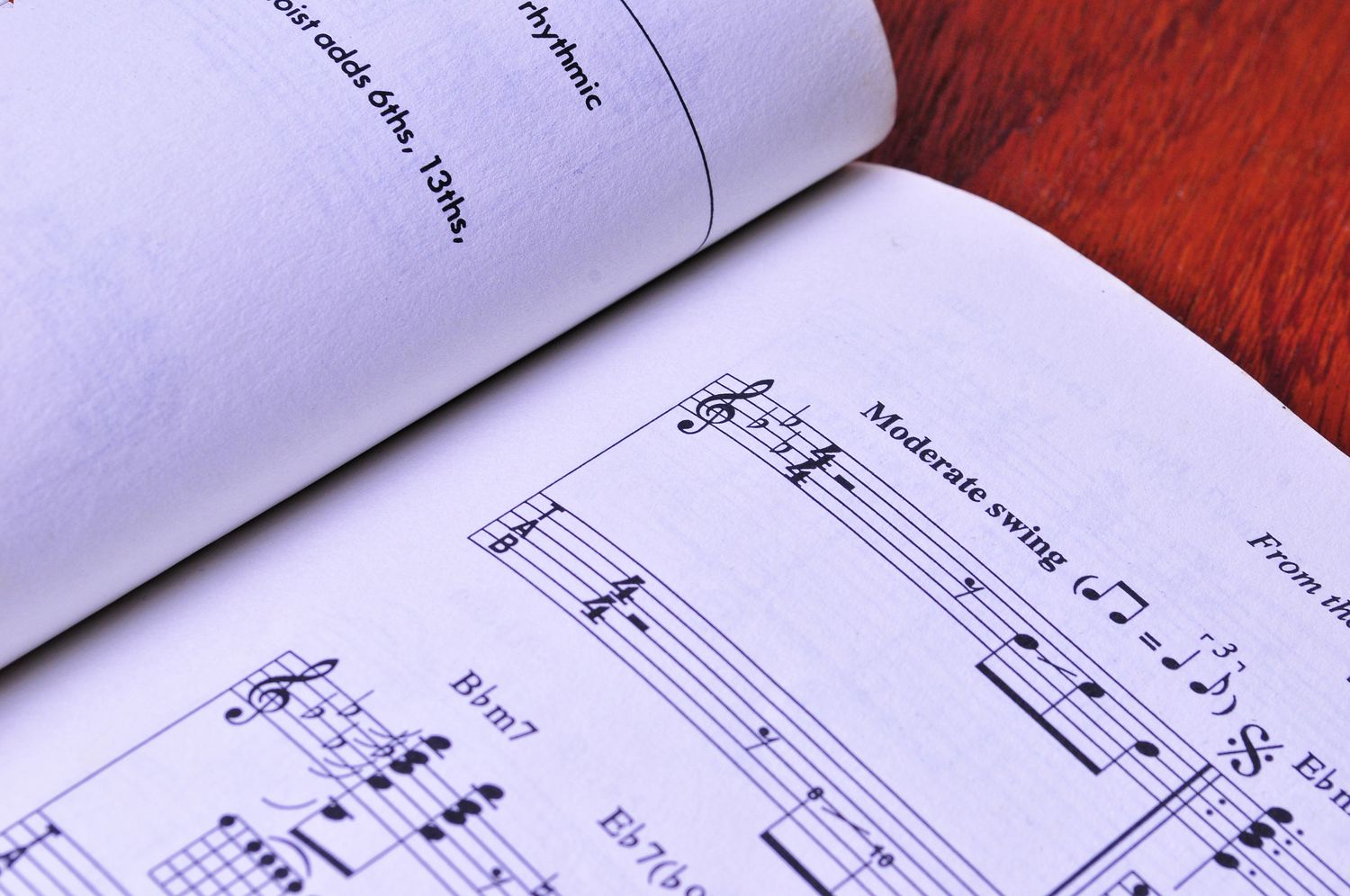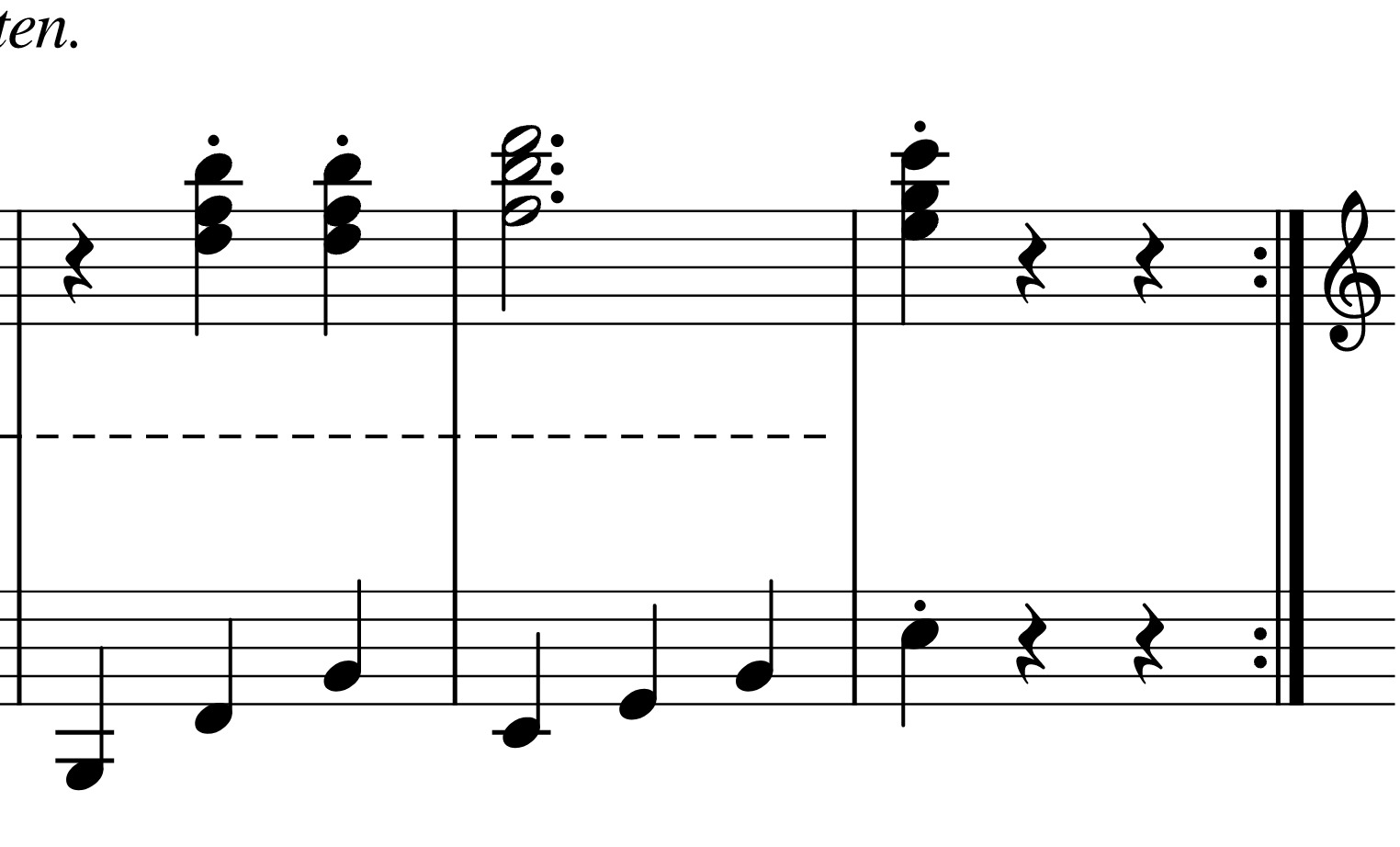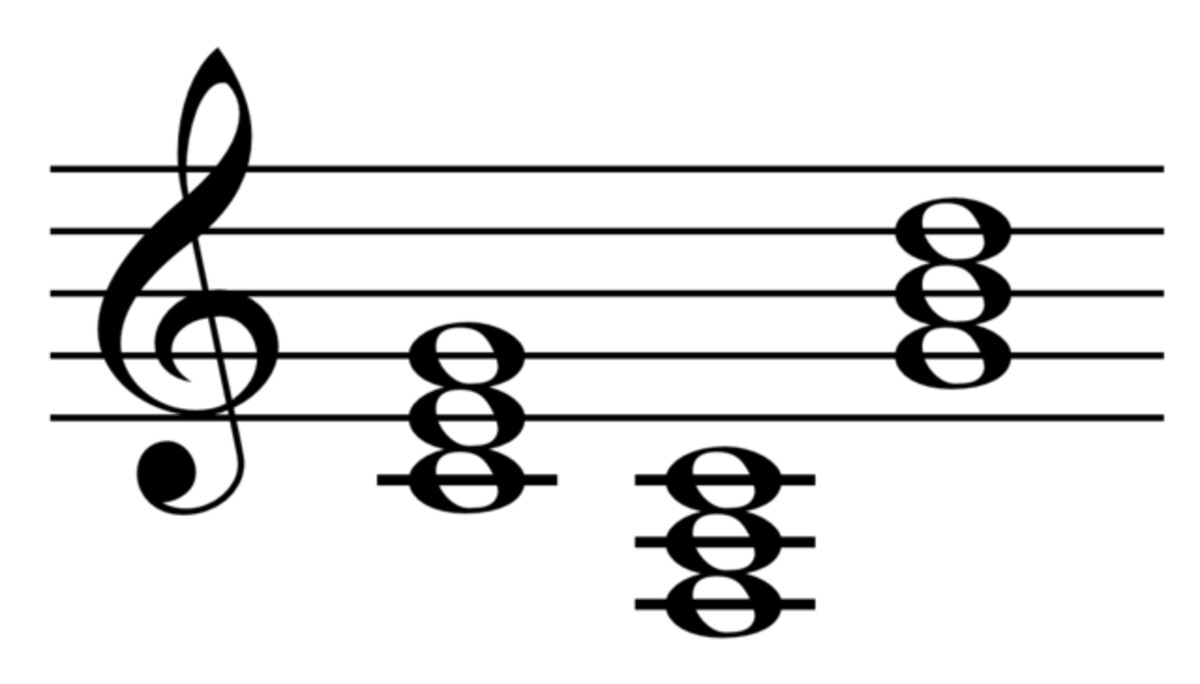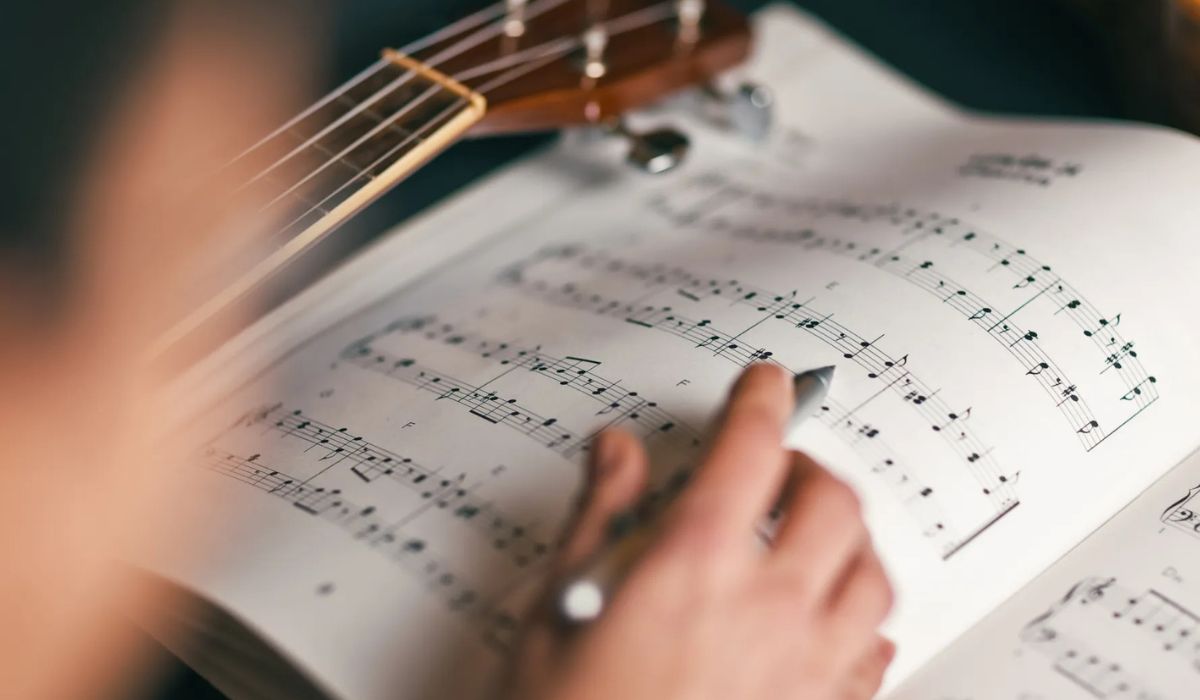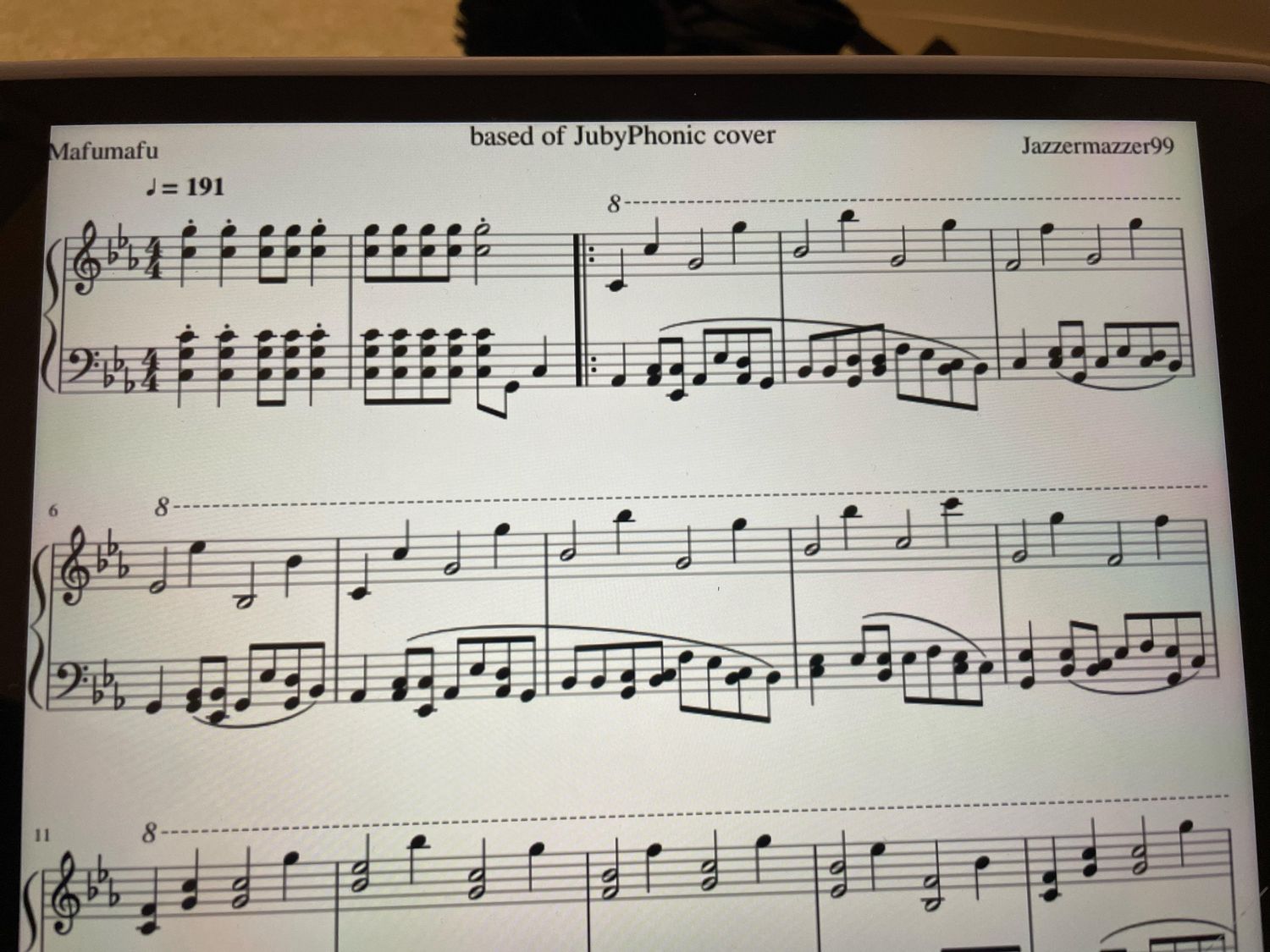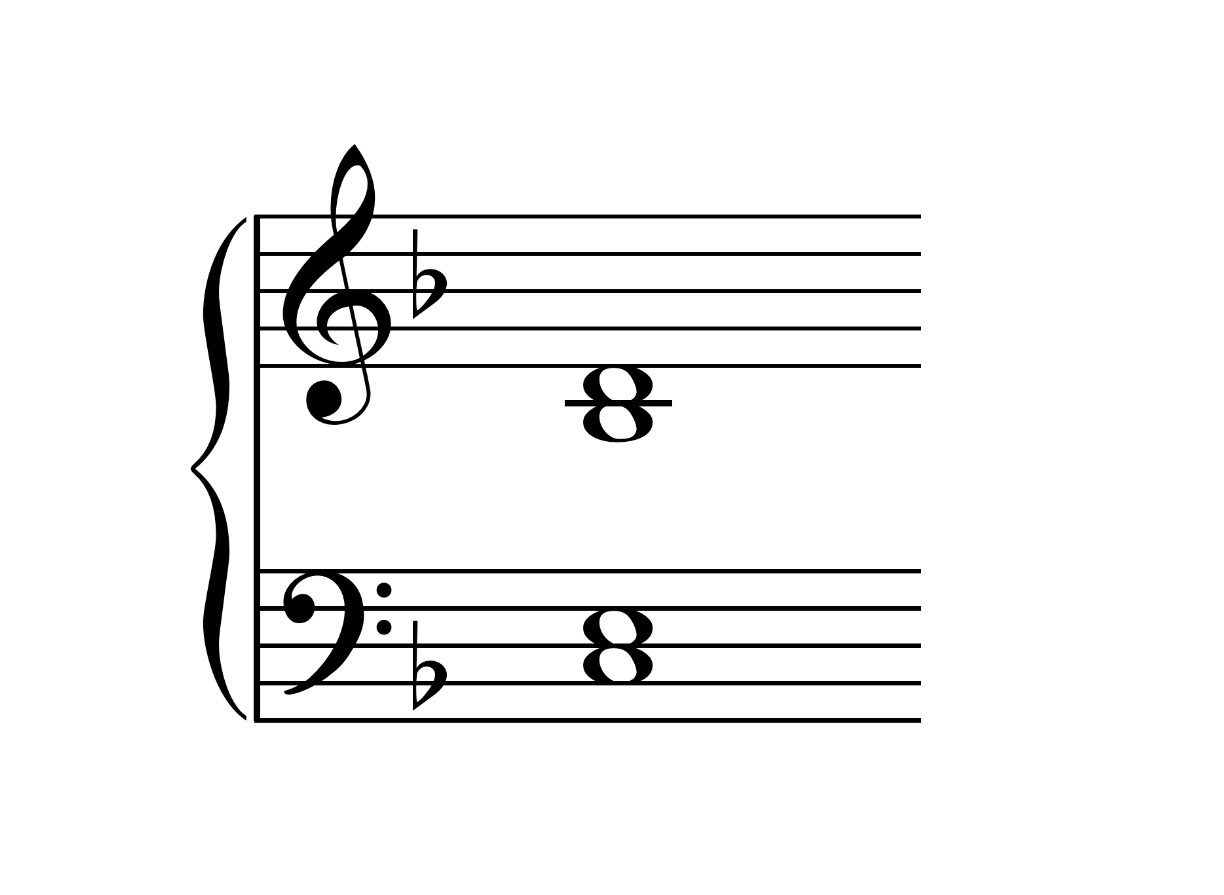Home>Production & Technology>Music Theory>What Is A Fundamental In Music Theory


Music Theory
What Is A Fundamental In Music Theory
Published: January 29, 2024
Learn the basics of music theory and understand the significance of fundamentals in composing melodies, harmonies, and rhythms. Explore the essential concepts and principles that shape the world of music.
(Many of the links in this article redirect to a specific reviewed product. Your purchase of these products through affiliate links helps to generate commission for AudioLover.com, at no extra cost. Learn more)
Table of Contents
Introduction
Welcome to the exciting world of music theory! Music theory is the academic study of the principles, structures, and elements of music. It provides a framework for understanding and analyzing the intricate patterns and relationships within music compositions. One fundamental concept in music theory is the notion of a “fundamental.”
When we talk about fundamentals in music theory, we are referring to the foundational elements that form the basis of a musical composition. These fundamentals encompass various aspects of music, such as pitch, rhythm, melody, harmony, and form. Just as a solid foundation is crucial for constructing a sturdy building, understanding and mastering the fundamentals in music theory is essential for musicians and composers to create engaging and cohesive musical pieces.
In this article, we will delve into the definition, importance, and role of fundamentals in music theory. We will explore how these fundamentals shape music composition and provide examples to help illustrate their significance. Furthermore, we will discuss techniques for identifying and analyzing fundamentals within a musical piece.
Whether you are a music student, a professional musician, or simply an enthusiast looking to deepen your understanding of music, this article will provide you with valuable insights into the world of music theory and the crucial role that fundamentals play within it. So, let’s dive in and explore the fascinating world of musical fundamentals!
Definition of a Fundamental in Music Theory
In music theory, a fundamental refers to the most basic and essential element of a musical composition. It can be thought of as the building block upon which the entire piece is constructed. Fundamentals encompass various musical aspects, including pitch, rhythm, melody, harmony, and form.
When it comes to pitch, the fundamental refers to the lowest note or tonic of a musical piece or a particular chord. It provides a sense of stability and establishes the tonal center or key of the composition. The relationship between the fundamental pitch and the other pitches in a musical phrase or chord progression creates tension and resolution, adding depth and complexity to the music.
Rhythmically, the fundamental refers to the foundational pulse or beat that drives the piece forward. It sets the tempo and provides a rhythmic framework for the other musical elements to adhere to. The rhythm of a piece can be intricately crafted, and the skillful manipulation of fundamentals within the rhythm can create a dynamic and engaging musical experience.
Melodically, the fundamental refers to the central theme or motif of a composition. It is the primary musical idea around which the melody is developed. The fundamental melody serves as a recurring theme throughout the piece, providing cohesion and establishing a recognizable musical identity.
Harmonically, the fundamental refers to the root note or chord that forms the basis for the harmonic structure of a piece. It provides a reference point for other chords and harmonies within the composition. The interplay between the fundamental harmony and the other chords creates tension, release, and harmonic movement, shaping the overall mood and emotional impact of the music.
In terms of form, the fundamental refers to the underlying structure that organizes the musical ideas within a piece. It encompasses elements such as verse-chorus patterns, AABA structures, or sonata forms. The fundamental form provides a roadmap for the development, repetition, and variation of musical ideas, ensuring coherence and continuity throughout the composition.
Overall, the fundamental in music theory is the foundational element that underpins the pitch, rhythm, melody, harmony, and form of a musical composition. It acts as the starting point from which all other musical elements are built, and understanding the role and significance of fundamentals is crucial for musicians and composers in crafting compelling and meaningful music.
Importance of Fundamentals in Music Theory
The fundamentals in music theory are of utmost importance for musicians and composers. They provide a strong foundation and serve as a guide for creating expressive and coherent musical compositions. Here are some key reasons why fundamentals are crucial in music theory:
1. Structure and Organization: Fundamentals establish the structure and organization within a musical piece. Whether it’s the tonal center, rhythmic pulse, melodic motif, harmonic progression, or overall form, understanding and utilizing fundamentals ensures that the composition has a clear and logical framework. This allows the listener to engage with the music and follow its development more easily.
2. Cohesion and Unity: Fundamentals contribute to the cohesion and unity of a musical composition. By establishing a central pitch, rhythm, or melodic theme, the fundamentals help tie together the different sections and elements of the piece. They provide a recurring reference point that connects various musical ideas and enhances the overall aesthetic flow of the music.
3. Emotional Impact: Fundamentals play a crucial role in creating emotional impact in music. The relationship between tension and resolution, which is facilitated by fundamentals like pitch and harmony, can evoke various emotions in the listener. By manipulating these fundamentals, composers can elicit feelings of tension, release, joy, sadness, or excitement, adding depth and emotional richness to their compositions.
4. Communication and Interpretation: Fundamentals serve as a common language for musicians and composers to communicate and interpret musical ideas. By understanding and using consistent fundamental elements, musicians can easily communicate their intentions and interpretations to each other. It allows for smoother collaborations and enhances the ability to convey musical expression effectively.
5. Analytical Approach: Fundamentals provide a framework for analysis in music theory. By examining the fundamentals within a musical composition, musicians and scholars can delve into the underlying structures and patterns. This analytical approach helps in understanding the composer’s intentions, identifying recurring motifs, and uncovering the intricacies of the composition.
6. Skill Development: Mastering the fundamentals is essential for skill development in music. Whether it’s practicing scales and chords for pitch and harmony, working on rhythmic exercises, or studying melodic patterns, a solid understanding of fundamentals improves musicianship and paves the way for more advanced techniques and musical exploration.
Overall, understanding and applying fundamentals in music theory is vital for musicians and composers. They provide a solid foundation, enhance the structure and emotional impact of compositions, facilitate communication and analysis, and contribute to skill development. By harnessing the power of fundamentals, musicians can create captivating and meaningful musical experiences.
The Role of a Fundamental in Music Composition
In the realm of music composition, a fundamental plays a significant role in shaping the overall character and structure of a musical piece. It serves as a guiding force and provides a strong foundation for the composer’s creative process. Let’s explore the various roles that a fundamental plays in music composition:
1. Establishing a Tonal Center: The fundamental pitch or chord serves as the tonal center of a composition, setting the overall key and providing a sense of stability. It acts as a reference point from which other musical elements derive their relationships and interactions. By establishing a tonal center, the composer establishes a framework that influences the melodic, harmonic, and formal choices throughout the piece.
2. Creating Musical Themes: A fundamental can serve as the basis for creating melodic and harmonic themes within the composition. By developing variations and expansions upon the fundamental motif, the composer creates a cohesive and recognizable musical identity throughout the piece. These themes can be recurring motifs or melodic phrases that tie the different sections of the composition together.
3. Guiding Harmonic Progression: The fundamental pitches or chords often guide the harmonic progression within a composition. The relationship between the fundamental and other chords helps create tension and resolution, leading to harmonic movement and emotional impact. Composers strategically manipulate the harmonies based on the fundamental to create specific moods and evoke desired emotional responses in the listener.
4. Influencing Rhythmic Patterns: The fundamental also plays a role in shaping the rhythmic patterns and structure of a composition. The rhythm often aligns with the fundamental pulse or beat, providing a rhythmic foundation for the melody and harmony to unfold. By manipulating the rhythm in relation to the fundamental, composers can create rhythmic variations, syncopations, and accents that add depth and interest to the music.
5. Structuring the Form: The fundamental helps in structuring the form of a composition. It establishes the overall form or structure, such as verse-chorus patterns, AABA forms, or symphonic movements. The repetition, development, and variation of the fundamental themes and motifs within these forms provide a sense of coherence and organization in the composition.
6. Expressive Enhancement: Fundamentals are also essential for expressing the composer’s intended emotions and ideas. By carefully selecting and manipulating the fundamental elements, composers can convey different moods, emotions, and narratives within their compositions. The choice of pitch, rhythm, and harmony based on the fundamental greatly influences the expressive qualities of the music.
Overall, the role of a fundamental in music composition is multi-faceted. It guides the tonality, creates musical themes, influences harmonic progression and rhythmic patterns, structures the form, and enhances expressive qualities. Understanding and effectively utilizing the fundamental elements allows composers to create cohesive, captivating, and emotionally impactful musical compositions.
Examples of Fundamentals in Music Theory
Fundamentals in music theory manifest in various aspects of musical compositions. Here are a few examples that illustrate how fundamentals are present in different musical elements:
1. Pitch: In terms of pitch, the fundamental can be observed in the form of a tonic note or chord. For instance, in the key of C major, the note C acts as the fundamental pitch. It establishes the tonal center for the composition and serves as a reference point for other pitches in the melody and harmony.
2. Rhythm: The fundamental in rhythm corresponds to the underlying pulse or beat that provides a rhythmic framework for the composition. For example, in a piece of music with a 4/4 time signature, the fundamental rhythm would typically consist of four beats per measure, with emphasis on the first beat.
3. Melody: In terms of melody, the fundamental is often represented by a key melodic motif or theme that reoccurs throughout the composition. This motif serves as the fundamental melodic idea that guides the development of the melody. An example of this can be found in Beethoven’s Symphony No. 5, where the four-note motif (G-G-G-Eb) serves as the fundamental melodic theme, appearing throughout the entire symphony.
4. Harmony: The fundamental in harmony refers to the root note or chord that forms the basis for the harmonic structure of the composition. For example, in a piece in the key of A minor, the A minor chord would serve as the fundamental harmony, setting the foundation for other chords and harmonic progressions within the piece.
5. Form: The fundamental in form can be observed in the underlying structure or framework that organizes the composition. For instance, in a popular song with a verse-chorus structure, the fundamental form is characterized by the repetition and alternation between the verse and chorus sections.
6. Dynamics: The fundamental in dynamics relates to the overall volume or intensity of the musical composition. It establishes the baseline level of loudness or softness, with variations and contrasts added to create expressive dynamics throughout the piece.
These examples demonstrate how fundamentals are present in different elements of music theory. By understanding and utilizing these fundamentals, musicians and composers can effectively structure their compositions, convey emotions, and create a cohesive and engaging musical experience.
How to Identify a Fundamental in Music
Identifying the fundamental in music requires a keen ear and an understanding of the different elements that make up a composition. Here are some techniques to help you identify the fundamental in music:
1. Listen for the Tonal Center: Pay attention to the pitch or chord that sounds the most “resolved” or stable. This is likely the fundamental and serves as the tonal center of the composition. It may be the first note or chord you hear or the one that feels the most resolved after a phrase or progression.
2. Identify the Recurring Motifs: Listen for recurring melodic or rhythmic motifs throughout the piece. These motifs often stem from the fundamental and help establish its presence as a thematic element. Look for patterns that repeat and tie different sections of the composition together.
3. Analyze the Harmonies: Examine the chord progressions in the composition. The fundamental root note or chord is typically the starting point for the harmonic progressions. Look for chord resolutions that gravitate towards the fundamental and provide a sense of stability.
4. Assess the Rhythmic Pulse: Pay attention to the underlying beat or pulse that drives the composition. The fundamental in rhythm is often associated with the primary rhythm or time signature of the piece. Listen for the recurring rhythmic pattern that establishes the framework for the other rhythmic elements.
5. Consider the Form: Analyze the overall structure of the composition. The fundamental often plays a role in shaping the form, such as verse-chorus patterns or thematic developments. Look for recurring sections or themes that serve as the foundation for the composition’s structure.
6. Explore the Emotional Impact: Observe how the composition makes you feel. The fundamental often contributes to the emotional impact of the music. Pay attention to the tension and resolution created by the relationship between the fundamental and other musical elements. This emotional impact can provide clues to the presence and significance of the fundamental.
It’s important to note that identifying the fundamental in music requires active listening and familiarity with the musical elements within a composition. With practice, you will develop a refined ear for recognizing the fundamental and its role in shaping the overall musical experience.
Conclusion
In the realm of music theory, fundamentals are the foundational elements that shape and define musical compositions. Understanding and utilizing these fundamentals is essential for musicians and composers to create engaging and cohesive music.
The definition of a fundamental in music theory encompasses various aspects, including pitch, rhythm, melody, harmony, and form. These fundamentals serve different roles in music composition, such as establishing tonal centers, creating musical themes, guiding harmonic progressions, structuring the form, and enhancing emotional expressiveness.
By recognizing and analyzing the presence of fundamentals, musicians can gain a deeper understanding of the inner workings of a composition. These fundamentals provide a framework for organization, unity, and expressive communication within a musical piece.
Whether you are a music student, a professional musician, or simply an enthusiast, having a solid grasp of fundamentals in music theory is crucial for enhancing your musical understanding and creativity. It allows you to approach compositions with a more analytical mindset, make informed artistic decisions, and effectively communicate musical ideas.
Through active listening and careful analysis, one can identify fundamentals in music by paying attention to the tonal center, recurring motifs, harmonies, rhythmic pulse, form, and emotional impact within a composition.
In conclusion, fundamentals in music theory play a vital role in creating structured, expressive, and meaningful compositions. They provide a solid foundation from which musicians and composers can build imaginative and captivating musical experiences. So, embrace the power of fundamentals, and let them guide you on your musical journey.

